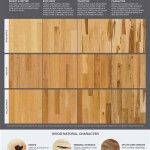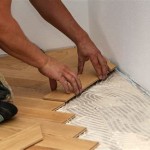Best Non-Slip Flooring Options for Bathrooms
Bathrooms, by their very nature, are prone to moisture. The presence of water, steam, and condensation makes slippery surfaces a common hazard. Selecting appropriate flooring is crucial for ensuring safety and preventing accidental falls. This article explores several non-slip flooring options suitable for bathrooms, outlining their characteristics, advantages, and disadvantages to aid in informed decision-making.
Understanding Slip Resistance and Safety Standards
Before examining specific flooring types, it is important to understand the metrics used to measure slip resistance. The most common measurement is the Dynamic Coefficient of Friction (DCOF), which assesses the friction between two surfaces when one is already in motion. A higher DCOF value indicates a greater resistance to slipping. The American National Standards Institute (ANSI) has established DCOF standards for various applications, generally recommending a DCOF of 0.42 or higher for level interior surfaces expected to be walked on when wet.
Another commonly used rating is the Pendulum Test Value (PTV), mainly used in the UK and Europe. This test measures the slip resistance of a surface when a pendulum slider, simulating a shoe heel, passes over it. Higher PTV values indicate better slip resistance. Floors with a PTV of 36 or higher are generally considered to have a low slip potential.
In addition to these metrics, consider the texture of the flooring material. Textured surfaces provide greater traction, reducing the risk of slipping. Matte finishes are generally preferable to glossy finishes, as they scatter light and provide a more secure grip. Furthermore, consider the presence of beveled or textured edges, which can further enhance slip resistance.
Popular Non-Slip Flooring Choices
Several flooring materials offer superior slip resistance, making them ideal for bathroom environments. The following sections examine some of the most popular options.
Porcelain and Ceramic Tile with Textured Finishes
Porcelain and ceramic tiles are durable, water-resistant, and relatively low-maintenance, making them a frequently chosen option for bathrooms. However, smooth, high-gloss tiles can become extremely slippery when wet. To mitigate this risk, selecting tiles with a textured finish is crucial. These textured finishes can range from subtle patterns to more pronounced ridges or embossing, providing a significantly improved grip.
Porcelain tiles are generally denser and less porous than ceramic tiles, making them more resistant to water absorption and staining. This is a significant advantage in a bathroom environment. When selecting porcelain or ceramic tiles, look for products specifically labeled as "slip-resistant" or "anti-slip." Check the DCOF rating to ensure it meets or exceeds the recommended standard of 0.42.
The grout lines between tiles also contribute to slip resistance, providing additional grip. Opting for wider grout lines can further enhance traction. Regularly cleaning grout lines is important to prevent the buildup of mildew and grime, which can reduce their effectiveness.
Luxury Vinyl Tile (LVT) and Luxury Vinyl Plank (LVP)
Luxury Vinyl Tile (LVT) and Luxury Vinyl Plank (LVP) are engineered flooring options that offer a combination of durability, water resistance, and aesthetic appeal. Many LVT and LVP products are designed with a textured surface that provides excellent slip resistance. These surfaces often mimic the appearance of wood, stone, or tile, offering a wide range of design possibilities.
LVT and LVP are typically constructed with multiple layers, including a wear layer that protects the flooring from scratches, dents, and stains. The thickness of the wear layer is an important factor to consider, as a thicker wear layer will provide greater durability and longevity. Look for LVT and LVP products with a wear layer of at least 20 mils for bathroom applications.
Many LVT and LVP products are also waterproof, making them a suitable choice for bathrooms. Waterproof LVT and LVP are designed to prevent water from penetrating the flooring, protecting the subfloor from damage. These products are particularly beneficial in areas prone to spills or leaks.
Stone Flooring: Slate and Textured Natural Stone
Natural stone, such as slate, granite, and travertine, can be a luxurious and durable flooring option for bathrooms. However, polished stone surfaces can be slippery when wet. Opting for stone with a naturally textured or honed finish is essential for ensuring slip resistance. Slate, with its inherent texture and natural clefting, is a particularly good choice.
The porous nature of some natural stone requires sealing to prevent water absorption and staining. Regular sealing is necessary to maintain the stone's appearance and prevent damage. Consider using a sealant specifically designed for use in wet environments, such as bathrooms.
The installation of stone flooring can be more complex and expensive than other options. Proper subfloor preparation is crucial to ensure a level and stable surface. Professional installation is generally recommended to avoid potential problems.
Rubber Flooring
Rubber flooring is a highly slip-resistant and resilient option suitable for bathrooms. It is often used in commercial settings, such as gyms and hospitals, where safety is a primary concern. Rubber flooring is available in a variety of textures and colors, allowing for considerable design flexibility.
Rubber flooring is typically made from recycled materials, making it an environmentally friendly choice. It is also highly durable and resistant to water, stains, and mildew. Rubber flooring provides excellent cushioning, making it comfortable to walk on and reducing the risk of injury from falls.
While rubber flooring offers several advantages, it can be more expensive than other options. The installation of rubber flooring can also be more complex and may require specialized adhesives. It is important to choose a high-quality rubber flooring product that is specifically designed for use in wet environments.
Epoxy Flooring with Anti-Slip Additives
Epoxy flooring is a durable and seamless option that can be customized with anti-slip additives to enhance traction. Epoxy coatings create a smooth, non-porous surface that is resistant to water, chemicals, and stains. The addition of aggregates, such as silica sand or aluminum oxide, to the epoxy mixture increases its slip resistance.
Epoxy flooring is often used in commercial and industrial settings, but it is also becoming increasingly popular for residential applications, including bathrooms. It is available in a wide range of colors and finishes, allowing for considerable design flexibility. Epoxy flooring is easy to clean and maintain, making it a practical choice for bathrooms.
The installation of epoxy flooring requires careful surface preparation and specialized equipment. Professional installation is generally recommended to ensure a proper application and prevent potential problems. The cost of epoxy flooring can vary depending on the type of epoxy used, the size of the area to be covered, and the complexity of the installation.
Factors to Consider When Choosing Non-Slip Bathroom Flooring
Beyond the type of flooring material, several factors should be considered when selecting non-slip flooring for bathrooms. These include:
Surface Texture and DCOF Rating
As previously mentioned, the surface texture and DCOF rating are crucial indicators of slip resistance. Select flooring with a textured surface and a DCOF rating of 0.42 or higher to ensure adequate traction. Consider the specific needs of the users of the bathroom. For example, if the bathroom is used by elderly individuals or those with mobility issues, a higher DCOF rating may be necessary.
Water Resistance and Maintenance
Bathrooms are inherently wet environments, so water resistance is a key consideration. Choose flooring materials that are waterproof or highly water-resistant to prevent water damage and mildew growth. Consider the ease of cleaning and maintenance. Flooring that is easy to clean and maintain will help to prevent the buildup of soap scum, mildew, and other substances that can reduce slip resistance.
Aesthetics and Design Preferences
While safety is paramount, the aesthetics of the flooring are also important. Choose a flooring material that complements the overall design of the bathroom and meets your personal preferences. Consider the color, pattern, and texture of the flooring, as well as its compatibility with other bathroom fixtures and accessories.
Cost and Installation
The cost of flooring can vary significantly depending on the material, size of the area to be covered, and complexity of the installation. Obtain quotes from multiple contractors to compare prices and ensure that you are getting a fair deal. Consider the cost of installation, as well as the cost of any necessary subfloor preparation. Some flooring materials are easier to install than others, which can affect the overall cost.
Subfloor Considerations
The existing subfloor must be properly prepared to ensure a stable and level surface for the new flooring. Uneven or damaged subfloors can compromise the integrity of the flooring and increase the risk of slips and falls. Depending on the condition of the subfloor, it may be necessary to repair or replace it before installing new flooring.
Maintaining Non-Slip Flooring for Optimal Safety
Even the most slip-resistant flooring can become slippery if not properly maintained. Regular cleaning and maintenance are essential for preserving the slip resistance of bathroom flooring. The following tips can help:
- Clean spills immediately to prevent them from drying and becoming slippery.
- Use cleaning products specifically designed for the type of flooring material. Avoid using harsh chemicals or abrasive cleaners that can damage the surface.
- Regularly clean grout lines to prevent the buildup of mildew and grime. Use a grout brush or a grout cleaner to remove stubborn stains.
- Consider using a non-slip mat or rug in areas that are prone to water accumulation, such as in front of the shower or bathtub.
- Inspect the flooring regularly for signs of wear and tear. Replace damaged or worn flooring promptly to prevent potential hazards.
By carefully considering the factors outlined in this article and implementing proper maintenance practices, it is possible to create a safe and attractive bathroom environment.

6 Reasons To Select Non Slip Bathroom Floor Tiles By Agl

Best Nonslip Shower Floor Tile Ideas 2024 Updated Country Floors Of America Llc

How To Choose The Best Non Slip Bathroom Floor Materials

Anti Skid Tiles For Bathroom Kitchen Slip Floor Orientbell

Best Nonslip Shower Floor Tile Ideas 2024 Updated Country Floors Of America Llc

Best Nonslip Shower Floor Tile Ideas 2024 Updated Country Floors Of America Llc

Best Nonslip Shower Floor Tile Ideas 2024 Updated Country Floors Of America Llc

Anti Skid Tiles Types Uses S In 2024 Maintenance Tips Benefits

6 Best Anti Slip Flooring For Bathroom Hdb Singapore 2024

How To Make A Tiled Shower Floor Less Slippery








